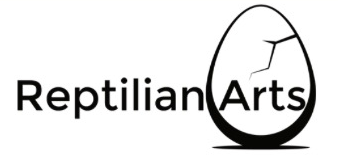How we feed our Leopard Geckos

One of the most important aspects of proper Leopard Gecko care is the type of food that you feed them. When it comes to feeding Leopard Geckos, you have many choices, like: mealworms, crickets, Dubia roaches, wax worms, and super worms. There are some other options but these are the most popular and easiest to feed. I will explain the main advantages and disadvantages of each feeder choice.
Mealworms- One of the most popular choices for Leopard Geckos, and for good reason. They are easy to feed to your gecko in a bowl since they cant jump around or escape the enclosures easily. They can be stored in a fridge for long periods of time, and they are readily available and inexpensive. The biggest negative of mealworms is that they are low in calcium, which geckos need in their diet. The mealworm exoskeleton can be hard to digest for some species of reptiles however, this is not a problem for Leopard Geckos.
Crickets- Another one of the most popular food choices, crickets are also readily available and inexpensive. They are very active which can increase your leopard gecko's willingness to hunt for it's food. Crickets are also fairly high in calcium, and very high in protein. However, crickets are hard to handle because they jump around so much, making them hard to catch. Also, the crickets' high level of activity can stress out your gecko and even bite it. For these reasons, you should not leave crickets in Leopard Gecko cages for multiple days, unlike with mealworms.
Dubia Roaches- I am very excited about Dubia Roaches and their increase in popularity in recent years. These insects are very high in calcium and protein. They are more active than mealworms, which makes them more desirable to your gecko. Also, they are not as active as crickets and they do not jump around and escape easily. Dubia roaches have a long lifespan, and they come in many different sizes. This flexibility allows you to feed Dubia roaches to virtually all age ranges of geckos, from hatchlings to full grown leopard geckos and even larger species. Unfortunately, Dubia Roaches are far more expensive than mealworms or crickets.
Wax Worms- Wax worms work well as a supplemental feeder choice. They contain a high level of fat, which can be helpful to add weight to thin, underweight geckos or to a breeding female that needs some extra nutrition. Wax worms are fairly inexpensive, like meal worms and crickets, and can be stored easily in the refrigerator for long periods of time. However Wax worms should not be fed as a staple food source because their high fat content.
Super Worms- These giant looking mealworms are readily available and can be a great feeder for adult Leopard Geckos. They can be placed in a bowl like mealworms and have more protein and calcium than mealworm. They do not contain as much protein as Dubia Roaches. The downside of super worms is that they are too big for juvenile geckos and their hard exoskeleton can be hard to digest.
What does Reptilian Arts use for our Leopard Geckos?
We use a staple of mealworms and supplement with Dubia Roaches. The mealworms overall, in my option, are the best feeders due to their cost, ease of keeping and feeding. We put the mealworms in a dish that they can't escape from, but small enough that our geckos can access it. We dust the mealworms with a 3 to 1 ratio of vitamin powder and calcium. For vitamin powder, we use Vionate. It is an industry standard and a vary good supplement. For calcium, we use Osteo-Form SA calcium powder. This combination works great to keep our Leopard geckos healthy and our breeding females laying lots of eggs. Also, we have extra vitamins/calcium mixture in our feeding bowls because the geckos will frequently lick it as they need additional supplements. We like our Leopard geckos to get as much vitamin/calcium as he or she needs. We add Dubia Roaches to supplement to our breeding geckos and others that are not growing as quickly. We have had great success with this protocol over the years.
- Rohman Taylor
